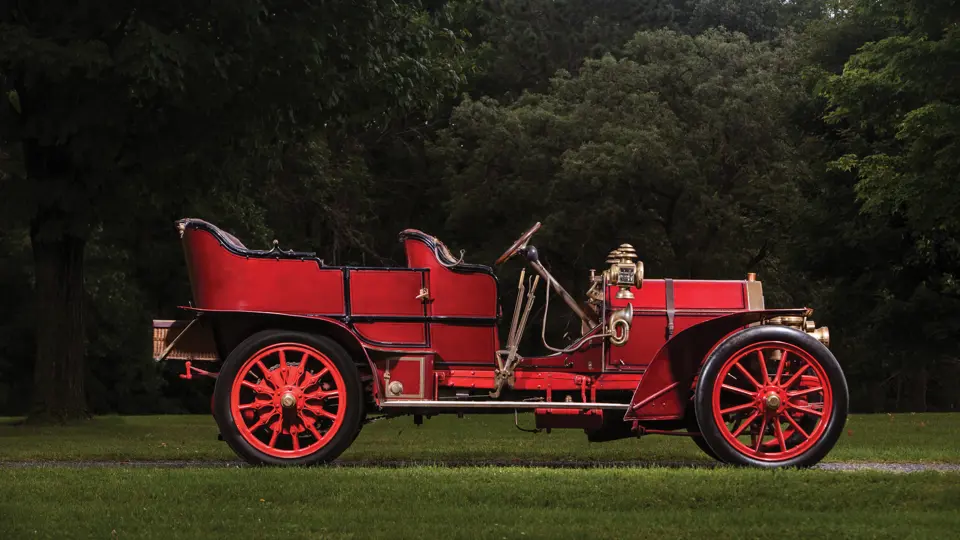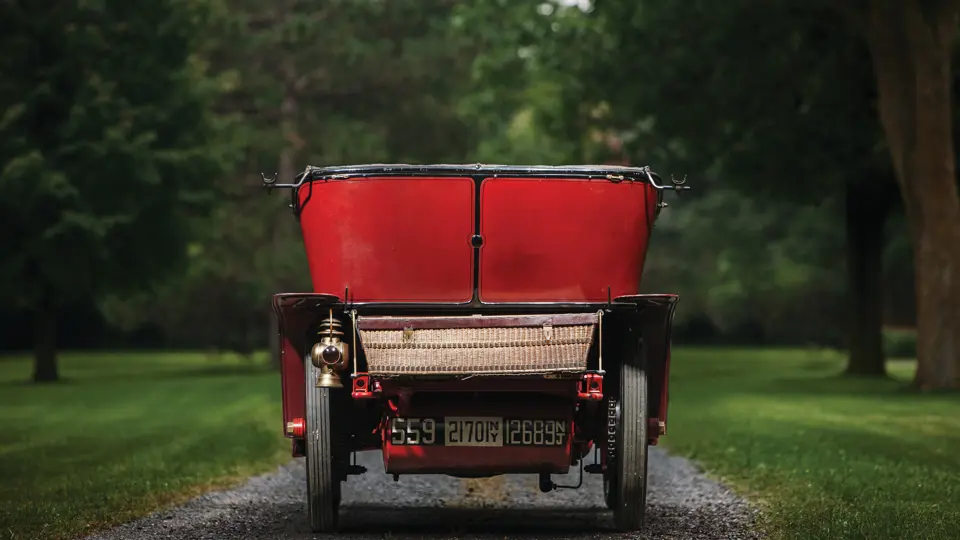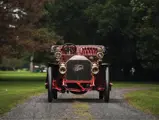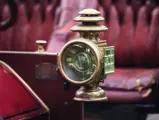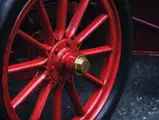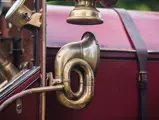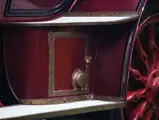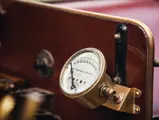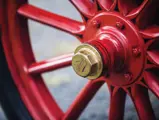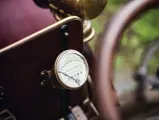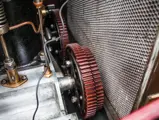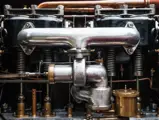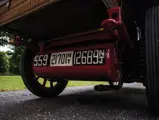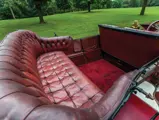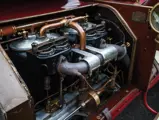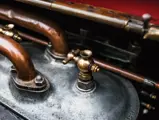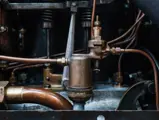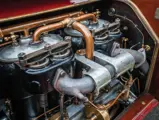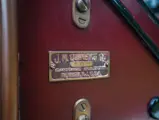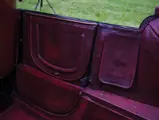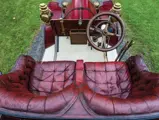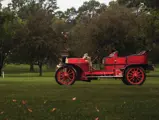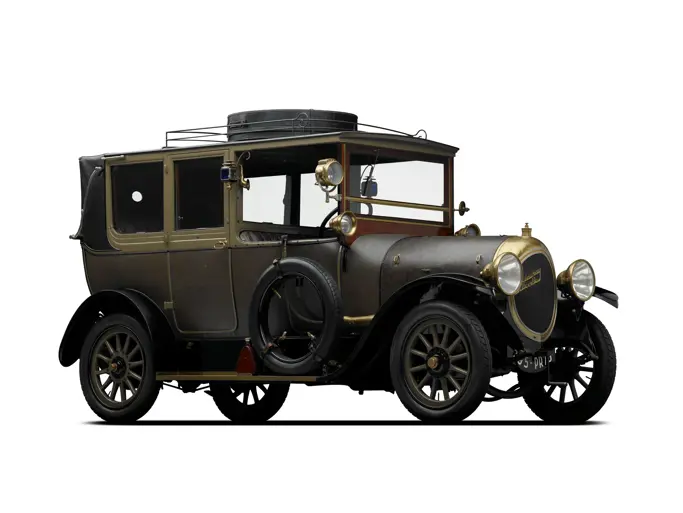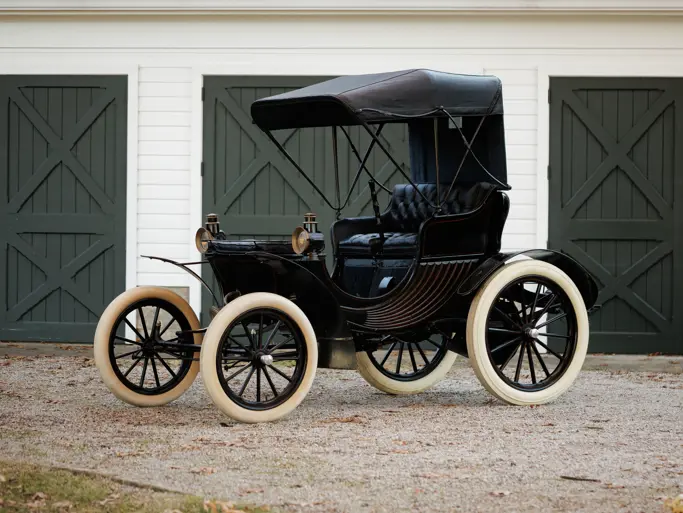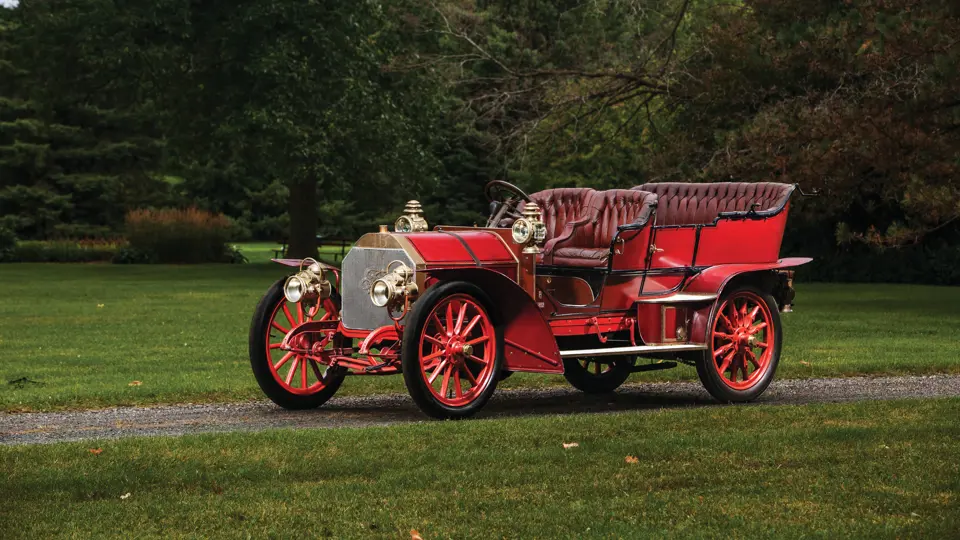
1905 FIAT 60 HP Five-Passenger Tourer by Quinby & Co.
{{lr.item.text}}
$825,000 USD | Sold
{{bidding.lot.reserveStatusFormatted}}
- Originally owned by August Anheuser Busch Sr.
- The third of twenty examples built; the sole surviving example
- Five caretakers over 109 years; highly original condition
- A 2012 Pebble Beach Preservation class runner-up
- The world’s first cost-no-object, elite automobile
60 hp, 647 cu. in. (10.61-liter) T-head four-cylinder engine, four-speed manual transmission with dual chain drive, pedal-operated dual driveshaft brakes, and handbrake-operated two-wheel rear mechanical drum brakes. Wheelbase: 117.5 in.
THE MIGHTY 60 HORSEPOWER
To properly put the FIAT 60 HP into context, one must thoroughly consider the era from which it emerged. The Fabbrica Italiana Automobili Torino was a pioneer of the automobile. It was founded in 1899 and competed against such French marques as Panhard and Darracq for a small but budding market. One of the firm’s principal motorsports competitors, the young Daimler Company that built the Mercedes, had yet to even join Karl Benz’ firm to create the iconic Daimler-Benz. Furthermore, some of racing’s best-known events had yet to be founded, while the formative races of the emerging motorsports culture, such as the Gordon Bennett Cup (the precursor to the first grand prix) and the Vanderbilt Cup, were still in their infancy.
The unrealized automotive landscape of this period is also underscored by the imported car market of United States, the numbers of which are equally telling. Almost strictly, the purview of the extremely well-heeled, imported European cars arrived to America in paltry numbers during the dawn of the 20th century, with just 267 examples imported in total during 1903. These 267 cars represented 18 percent of Europe’s total output, which was another indication of the automobile industry’s infancy.
The year 1903 was a watershed for FIAT, as its early automatic, inlet-valve motor was replaced by a new T-head, four-cylinder engine, whose cylinders were arranged in pairs. FIAT principal Giavanni Agnelli had by then arranged to license Mercedes’ successful honeycomb radiator design, which allowed for reliable power under the stress of hill climbs and sprints, at which the small range of cars was proving to be increasingly proficient. In many respects, FIATs were more technically advanced than their Mercedes counterparts, which was particularly evident in their superior oil lubrication systems.
A year later, FIAT mated the recent engine redesign to a new frame made of pressed steel, commencing a gradual transition from the wood frames that were standard to this point. This resulted in a car that was both more durable and less prone to flex, which was ideal for the competition forays that were becoming the company’s increased focus.
To crown the new 1904 lineup, FIAT built what is now regarded as the first true dual-purpose, cost-no-object premium supercar, equally suited for competition and refined cruising. With a total displacement of 10.6 liters, the mighty 60 HP was positioned as a challenger to Mercedes’ vaunted 60 HP; although, in truth, the FIAT motor exceeded the total displacement of Daimler’s 9.3-liter, F-head engine. Just 12 of these early road/racing supercars were produced before a slight change in the bore and stroke was undertaken a year later.
The 60 HP, which was produced through 1906, was available in two different wheelbase lengths, and it quickly redefined the limits of performance available in a road car and the degree of luxury possible in a racing-specification vehicle. The price of such engineering was not inconsequential, and the limited number of examples produced were almost exclusively exported to wealthy international sportsmen, as they cost a staggering $14,500 for the chassis alone (compared to around $600 for a well-trimmed Oldsmobile of the era). To this day, the FIAT 60 HP is rightly regarded as the first true Italian supercar and the antecedent of a relished tradition to later include such important automobiles as the pre-war Alfa Romeo 8C, the Ferrari GTO, and the Lamborghini Miura.
CHASSIS NUMBER 3003
According to the Registro Storico Fiat, chassis number 3003 was accepted on June 7, 1905, by FIAT’s sole American importer, Hollander and Tangeman, of Manhattan. It was the third of only twenty examples of the four-cylinder 60 HP built on the 2,985-millimeter wheelbase chassis (the shorter of two offerings for the model), and it is the only example known to survive today.
The car was fitted at the Turin factory with upgraded racing sprockets and a unique clutch that had been unseen in any other FIAT. It was then exported as a rolling chassis to Hollander and Tangeman and subsequently dispatched to New Jersey’s Quinby and Co. for coachwork. Quinby designer Herbert Strong had recently patented a new aluminum bodywork process that provided superior weight savings, making the coachbuilder an ideal choice for the performance-oriented 60 HP. Quinby fitted chassis number 3003 with luxurious five-passenger touring coachwork that featured internally mounted fasteners and brass moldings over its panel intersections, creating a seamless appearance that lacked any discernable rivets or joints. The labor-intensive technique justified the body’s steep price of $4,000, and the coachwork was appropriately finished in red paint, the national color reserved for American competitors at the Gordon Bennett Cup (the race that would soon morph into the first grand prix races held at Le Mans!). All told, the new FIAT cost over $18,000, making it the world’s most expensive car to date.
The FIAT was then delivered new to August Anheuser Busch Sr., the scion of the legendary brewing company in St. Louis, Missouri. Mr. Busch’s purchase was based on a strong recommendation of the 60 HP model from his close friend and fellow potentate, Kaiser Wilhelm II, the emperor of Germany, who had recently shelved his Mercedes for one of the Italian cars (in what proved to be somewhat of a public relations blunder).
The famed beer magnate retained possession of the FIAT until the end of his life in 1934, a year after which it was purchased from his estate by James Melton, the noted tenor, radio personality, and car collector who kept the 60 HP at his Connecticut estate. After being forced to relinquish the car six years later to cover his investment in a personally financed automobile museum, Mr. Melton reportedly lamented that he had just sold the best car he ever owned. The car was then sold to Dr. Don Miller, a local friend, and it was displayed from time to time and only driven on rare occasions. Well-known Connecticut collector Louis Biondi then purchased the FIAT in 1973 and kept it garaged for a majority of his ownership, following a brief tour after his initial acquisition.
In 2012, after 77 years of minimal use by three collectors residing within 10 square miles of one another, this historically significant 60 HP was acquired by the consignors, a pair of antique auto enthusiasts who had known of the car for some time and long wished to acquire it. They were particularly impressed by the FIAT’s overall originality, as it featured all of its original Quinby body panels and matching stampings on every important drivetrain component, with the exception of two items, the magneto and the carburetor. Both original items were de-installed at some point and accompanied the car at the time of the sale. The exhaustive list of matching-numbers components included the chassis, engine, transmission, steering, and suspension components, rear sprockets, chains, a radiator, a cooling fan, a belly pan, and even the securing fasteners.
Quinby’s body components were also impressively original, as they featured the coachbuilder’s wood framing, leather seats, mohair floor mats, brass lighting, most weather gear, and at least 90 percent of the original red paint. Even the wicker basket of the rear trunk rack is an original factory-supplied item that has been decorated with original FIAT logos. Furthermore, in a testament to how little the car had been used over the preceding 107 years, and the overall quality of its original manufacture, the body and chassis bore no evidence whatsoever of any stress cracks or sagging.
The owners, who were intent on returning the car to its original running condition while still maintaining the charming century-old patina and originality to the fullest possible extent, commissioned the respected George Ktsanes, of Wisconsin, to perform a careful sympathetic freshening. Mr. Ktsanes chiefly reinstalled the original carburetor and magneto, replacing two aftermarket items that had been installed at some point and had adversely affected the running condition (one reason perhaps for the car’s minimal use over such a long period). With the original components properly re-fitted, Mr. Ktsanes was able to tune the motor to allow for an easy hand-cranked start, comfortable idling under 100 rpm, and reliable cruising at speeds up to 50 mph or more. The remainder of the chassis and body were properly cleaned, lubricated, and detailed with the highest attention to preserve the originality of the finishes.
During the freshening process, word of the consignors’ acquisition spread, and a call soon came in from Sandra Button, the chairwoman of the Pebble Beach Concours d’Elegance. Even though the consignors had not applied for entry to Pebble Beach, Ms. Button was determined that what was surely the sole surviving example of one of FIAT’s most important early models could not be omitted from an event that was celebrating the Italian marque as a focus theme. Chassis number 3003 did not disappoint, as it earned Second Place in the Pre-war Preservation Class and the Meguiar’s Award.
A month later, the 60 HP was presented at the Kirkland Concours d’Elegance and won the Founders Award and the FIVA Most Well Preserved Vehicle Award. The consignor notes that the FIVA representative was blown away by the car’s originality and rarity. Following these great honors, the FIAT was then displayed in the entrance of the renowned LeMay Museum in Tacoma, Washington, which is a further indication of its historic significance. It also drew quite a crowd as part of the Horseless Carriage Club of Missouri’s presentation at the 2014 St. Louis Auto Show, where members of the Busch family visited to takes photographs with their ancestor’s car. Chassis number 3003 was also the subject of a feature article in the May/June 2014 issue of the Horseless Carriage Gazette by Gerald Perschbacher, which was titled, “The Busch 1905 FIAT: A Sole Survivor.”
This superlative antique automobile is currently accompanied by its original side curtains and a newly fabricated soft-top, as well as an original period oil can that features the original “F.I.A.T.” logo. It is one of the earliest known examples of the marque, and it is the lone surviving representative of the top-of-the-line 60 HP, the world’s first uber-premium, top-shelf luxury performance automobile. This stunning Brass Era vehicle, which is rarer and more technically advanced than the vaunted Mercedes 60 HP and is truly remarkable for its extreme originality alone, is a virtual holy grail of early automotive collecting, as it offers exceptional rarity, overwhelming originality, a beautiful patina, importance of mechanical specification, and significant ownership provenance of August A. Busch Sr. and James Melton.
Few antique automobiles convey such power, dignity, and historic cachet as this special 60 HP, and it promises to enrich the deepest collections of Brass Era antiques and Italian supercars and still captivate any concours field onto which it is driven.




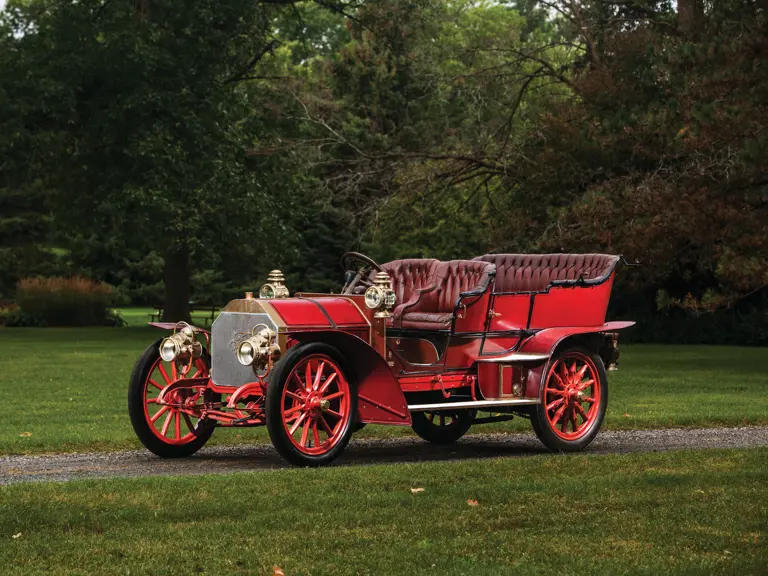
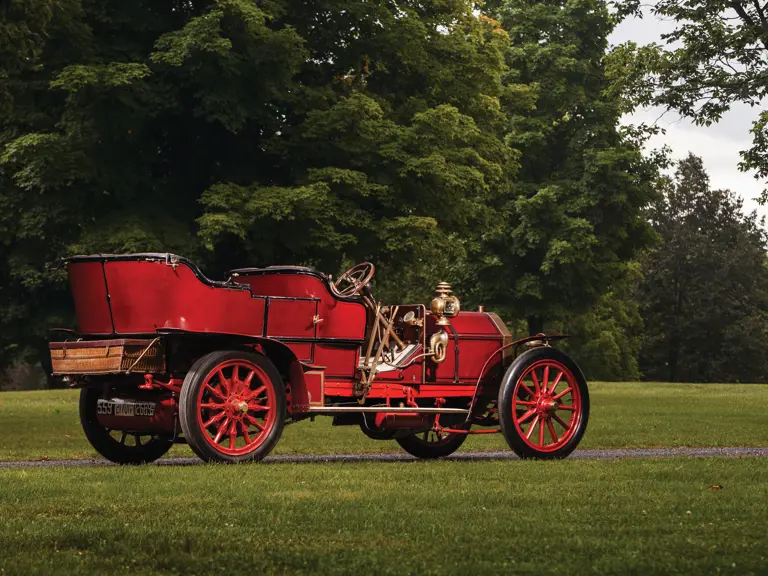
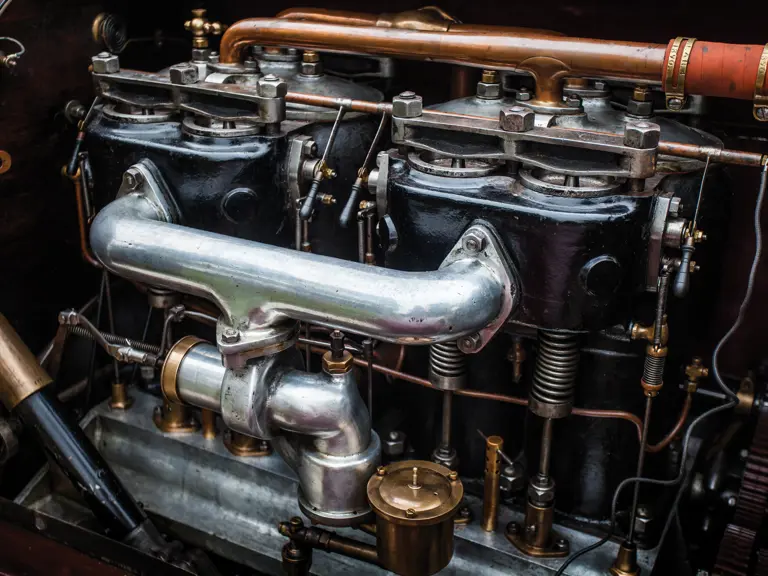


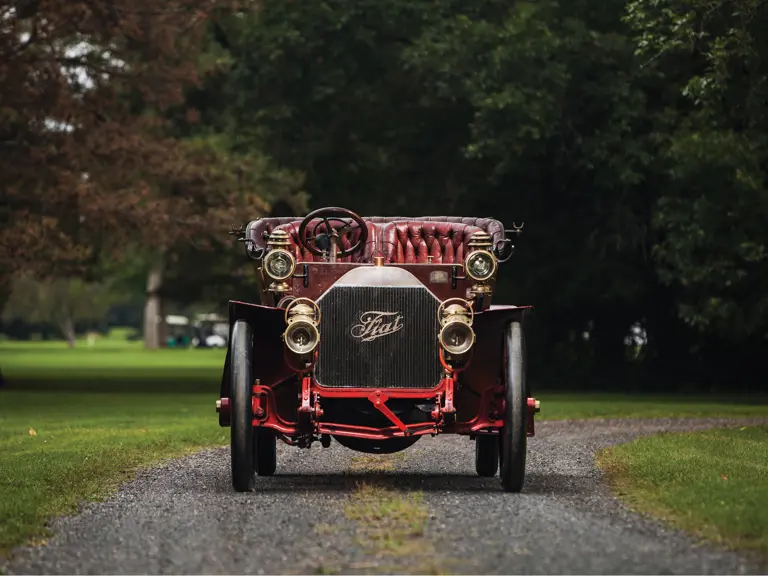

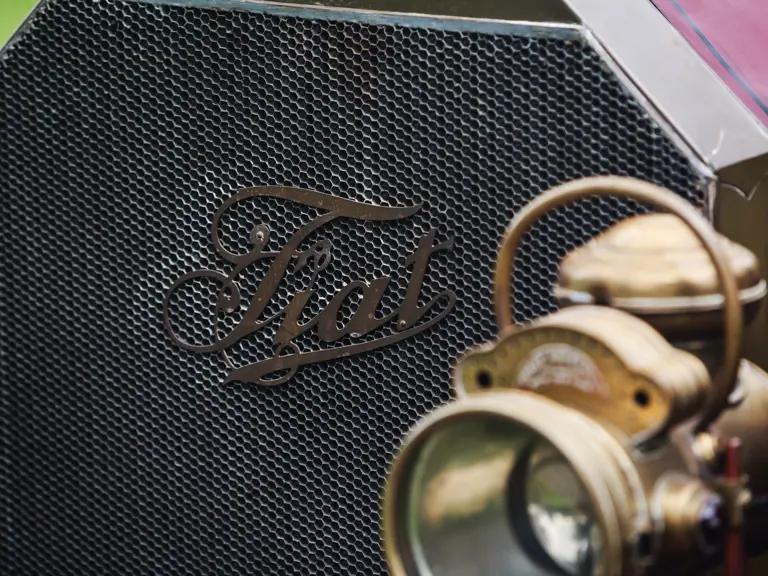

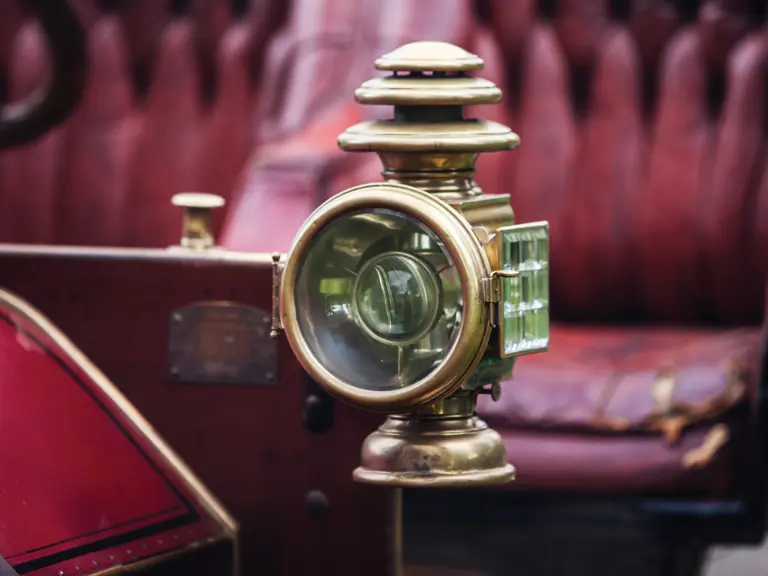
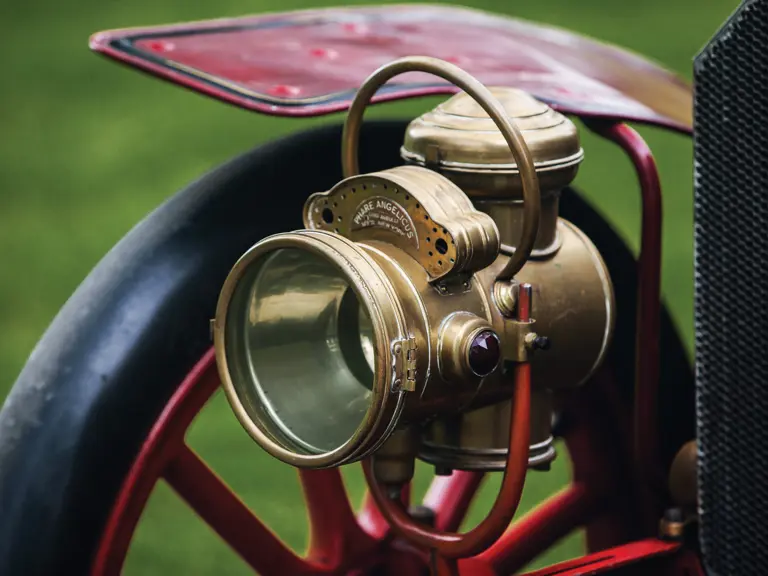
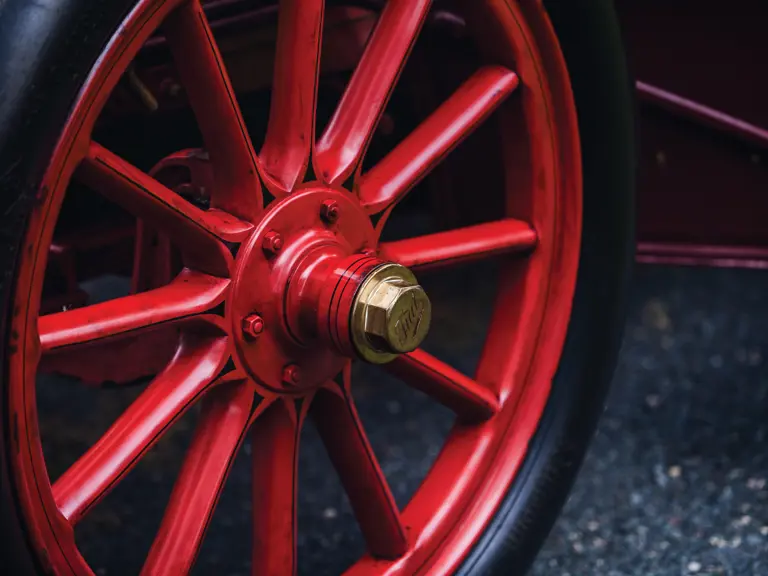

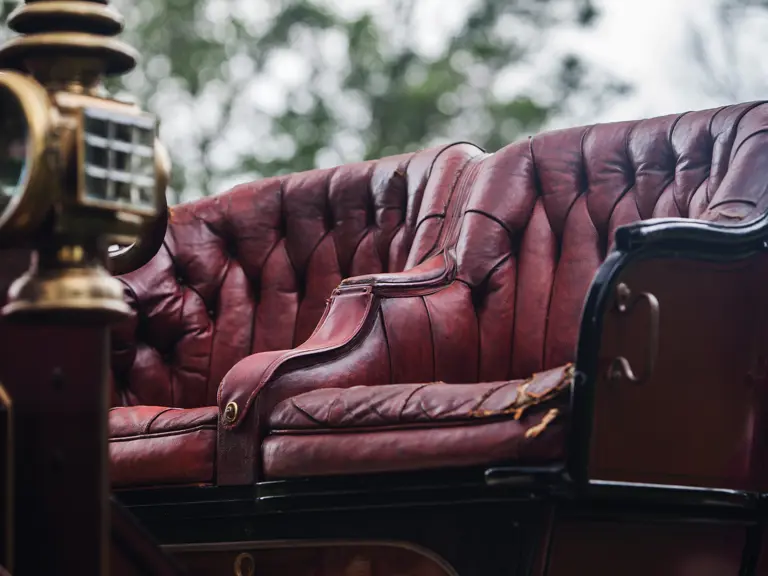


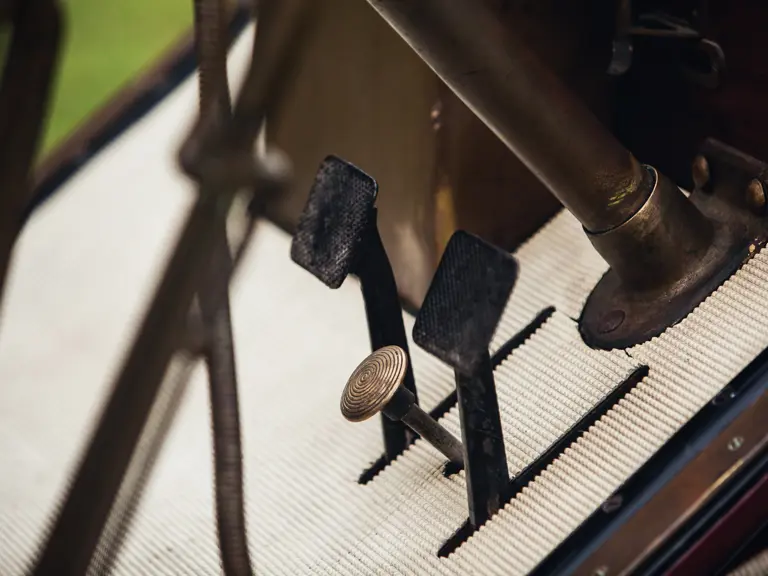
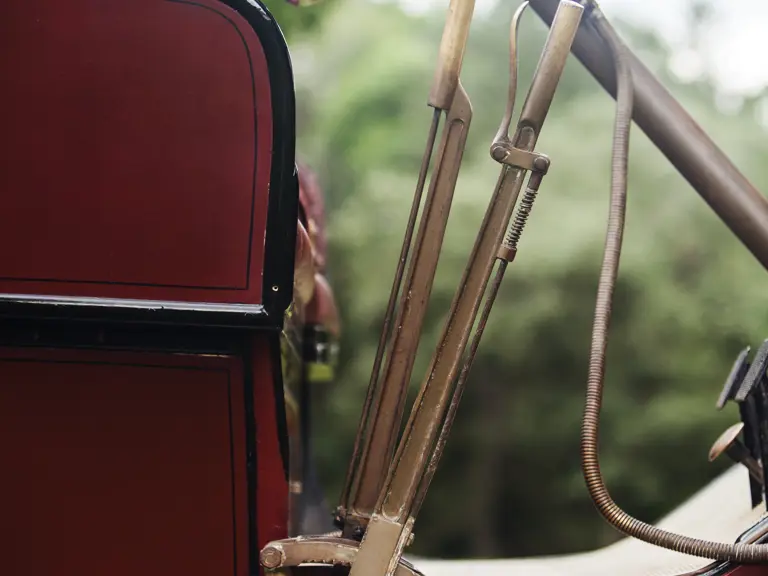
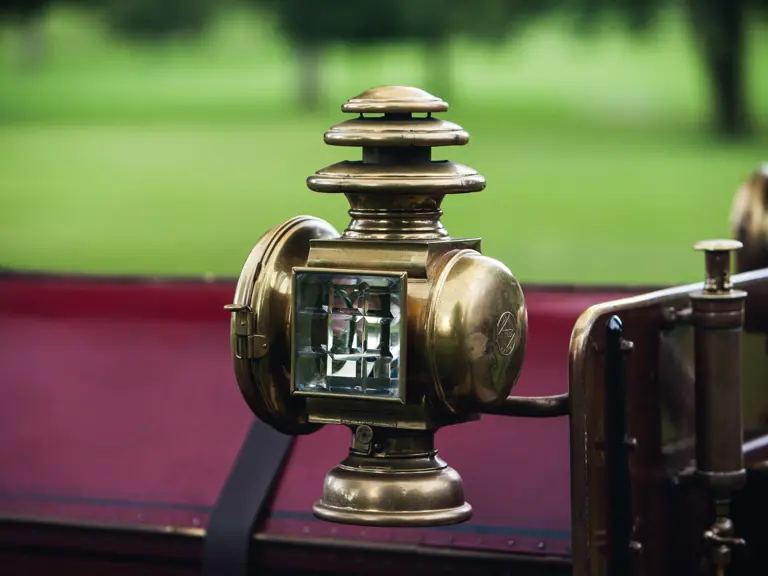

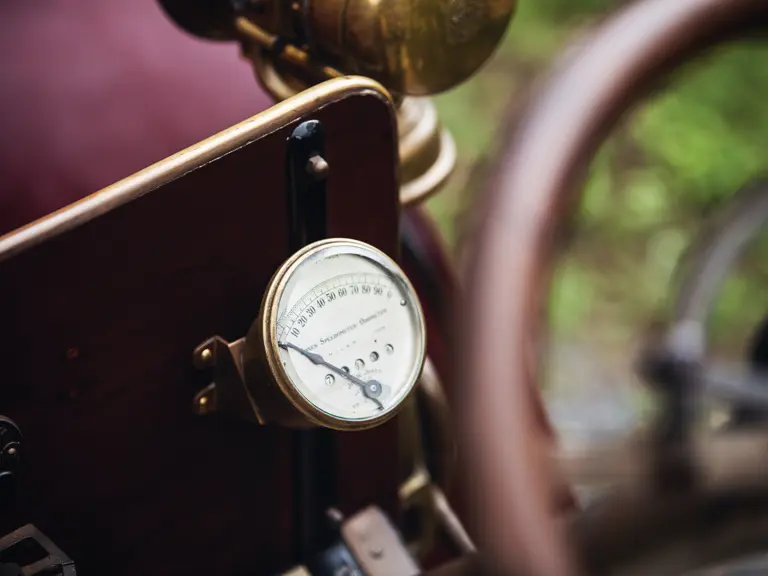
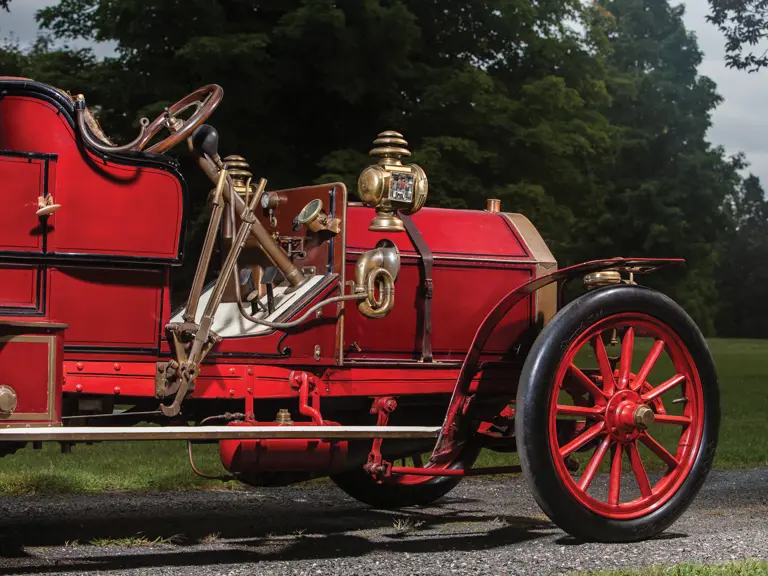
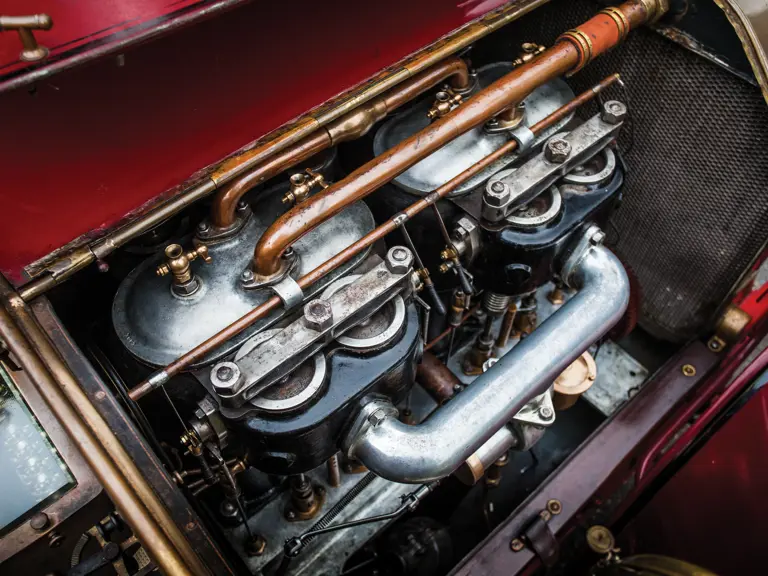

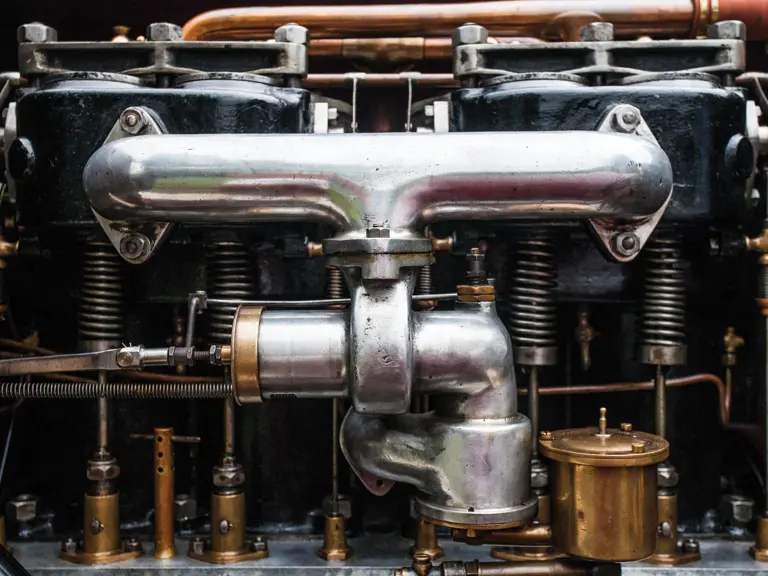



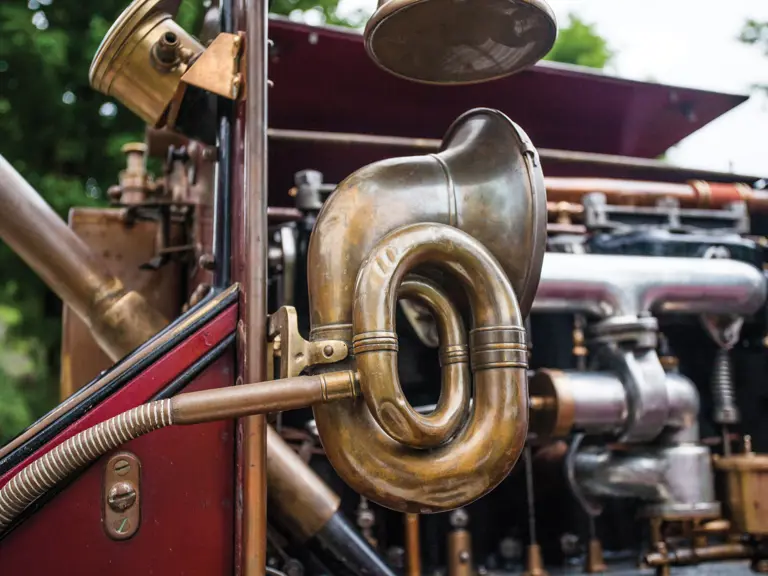


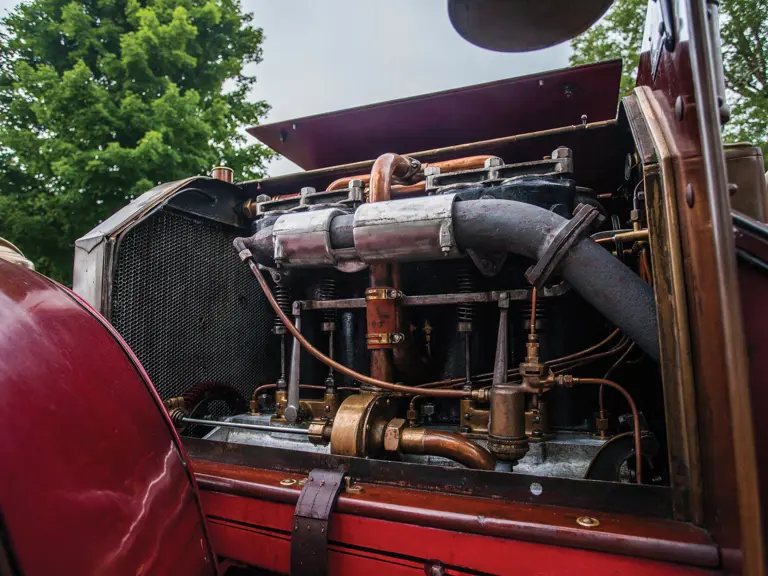

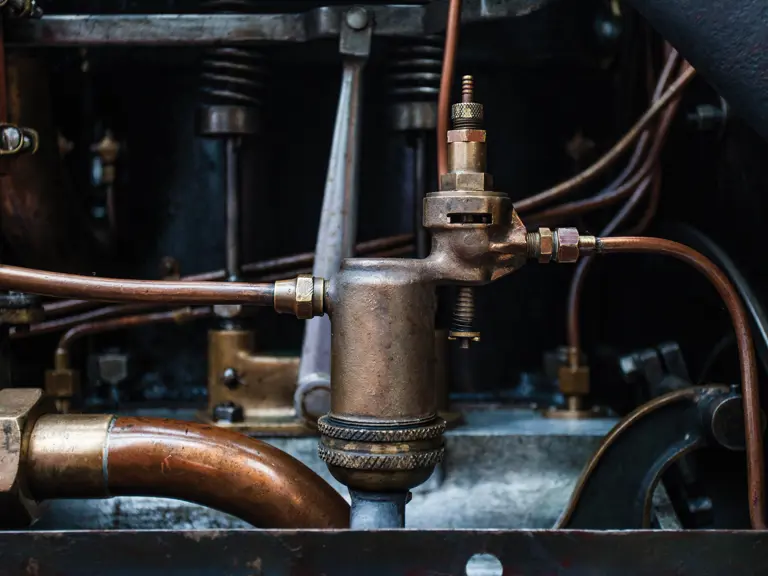
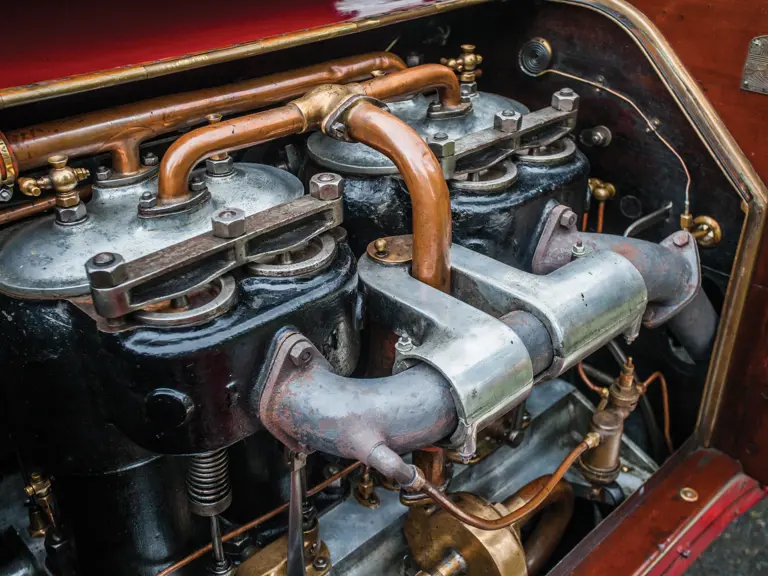
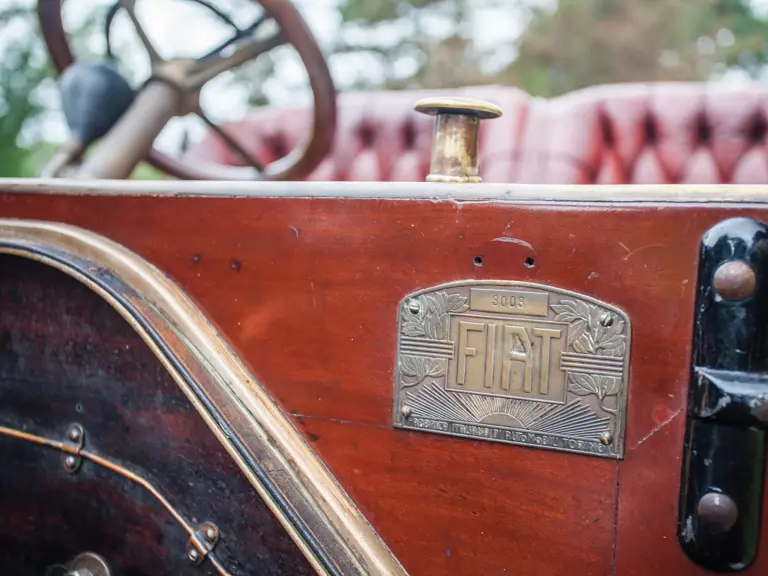
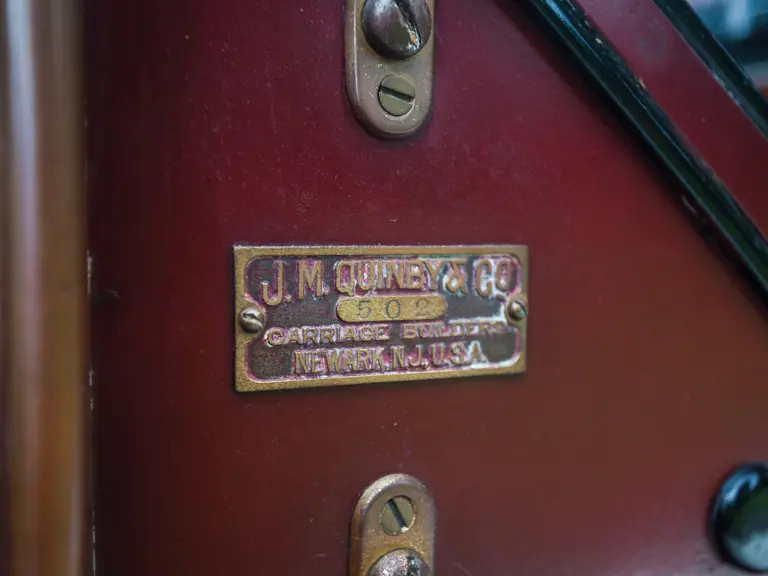
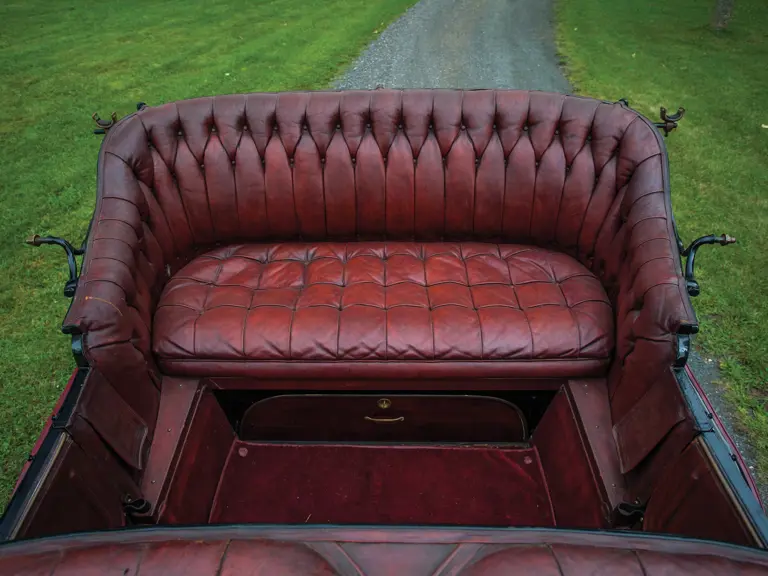
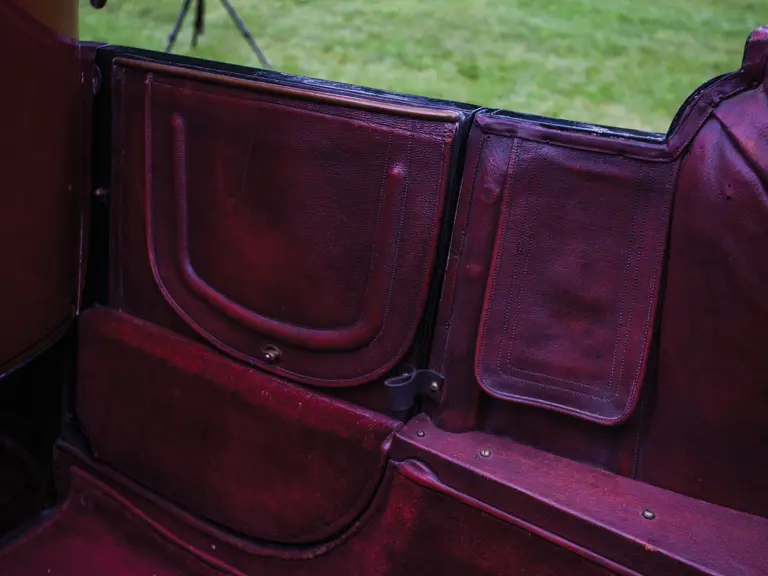

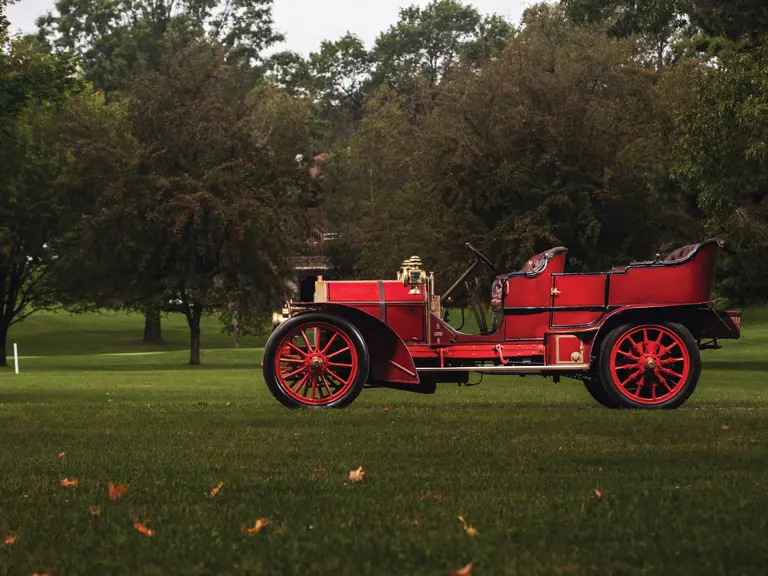
 | Hershey, Pennsylvania
| Hershey, Pennsylvania
